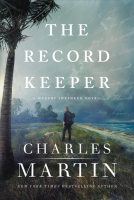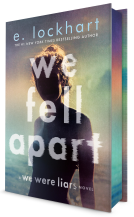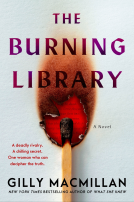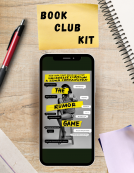
Look
A Practical Guide for Improving Your Observational Skills
by James H. Gilmore
This title was previously available on NetGalley and is now archived.
Send NetGalley books directly to your Kindle or Kindle app
1
To read on a Kindle or Kindle app, please add kindle@netgalley.com as an approved email address to receive files in your Amazon account. Click here for step-by-step instructions.
2
Also find your Kindle email address within your Amazon account, and enter it here.
Pub Date Aug 23 2016 | Archive Date Nov 21 2016
Greenleaf Book Group | Greenleaf Book Group Press
Description
Inspired by Edward de Bono’s Six Thinking Hats method, Jim Gilmore has created a unique and useful tool to help our ability to perceive. In his latest book, Look: A Practical Guide for Improving Your Observational Skills, Gilmore introduces the metaphor of “six looking glasses.” Each looking glass represents a particular skill to master in order to enhance the way we look at the world.
The six skills include binoculars, bifocals, magnifying glass, microscope, rose-colored glasses, and blindfold looking. Each looking glass provides an observational lens through which to see the world differently. This framework will help its users to:
• See the big picture
• Overcome personal bias
• Pinpoint significance
• Better scrutinize numerous details
• Uncover potential opportunities
• See what’s in the mind’s eye
These varying perspectives offer myriad practical applications: They can help any executive, manager, or designer more richly observe customer behavior, philanthropists and policy makers more keenly identify human needs, and anyone else interested in innovative thinking to first ground their ideation in practical observation.
Gilmore helps readers grasp the Six Looking Glasses by including helpful everyday examples and practice exercises throughout. Put into practice, this method of looking will help you see the world with new eyes.
Advance Praise
“Jim Gilmore teaches us that something as seemingly simple as looking can be crucial for success in any field. So get this book—and learn to look with whole new eyes.”
—Daniel H. Pink, Author of Drive and A Whole New Mind
“This book should be required reading in every design class and by every design team.”
—Mark Greiner, Senior Vice President, Business Concept Design & Chief Experience Officer at Steelcase Inc.
“Gilmore’s Six Looking Glasses provide a powerfully simple tool for helping travelers to see the world more richly. Pack them in your suitcase and enjoy the view with fresh eyes!”
—Chip Conley, Head of Global Hospitality & Strategy at Airbnb
“After reading Jim Gilmore’s new book, you will never look at the world—including healthcare—in the same way again.”
—Rolf Benirschke, Chief Patient Officer of Legacy Health Strategies
“Gilmore’s The Experience Economy brilliantly anticipated a new economy based not on goods and services but on memorable experiences. This time around, he brings his unique perspective to the much-ignored power of observational skills. Take a good look at Look.”
—Lee Knight, Founder & CEO of Exhibitor Media Group
“Once again, Jim Gilmore challenges organizations to find unique ways to drive innovation. The power of observation has long been extolled but rarely emphasized in business. Jim’s latest work will make all of us view our businesses through different lenses—and literally open our eyes.”
—David Peckinpaugh, President of Maritz Global Events
“Our culture is increasingly distracted. With eyes glued to screens, we are often oblivious to the people beside us and the places we inhabit. The ancient rebuke of God could certainly apply to our generation, ‘You have eyes but you do not see.’ Our failure to recognize the world around us is especially dangerous for those seeking innovative ideas because, as Gilmore reminds us, what we see determines what we think and do. Seeing differently is one of Gilmore’s specialties. He is one of the most gifted observers I know. Five minutes with him will convince you that ordinary objects and processes are overflowing with untapped potential—from airline seats to food preparation—if we could just learn to see them with new eyes. In Look he shares his simple but profound observational methods using Six Looking Glasses. Once you see the world with this tool, you won’t see it, or your work, the same way again.”
—Skye Jethani, Author of With and Futureville and Co-host of The Phil Vischer Podcast
Marketing Plan
National trade marketing and sales campaign
Online marketing campaign including trade advertising and advance giveaways via GoodReads
Advance distribution of digital ARC via NetGalley to reviews, bloggers, journalists, librarians, booksellers, and media
Available Editions
| EDITION | Other Format |
| ISBN | 9781626342996 |
| PRICE | $17.95 (USD) |
Links
Average rating from 8 members
Readers who liked this book also liked:
We Are Bookish
Arts & Photography, Health, Mind & Body, OwnVoices
We Are Bookish
Multicultural Interest, Mystery & Thrillers, Teens & YA
We Are Bookish
General Fiction (Adult), Literary Fiction, Women's Fiction
We Are Bookish
Multicultural Interest, OwnVoices, Teens & YA


















